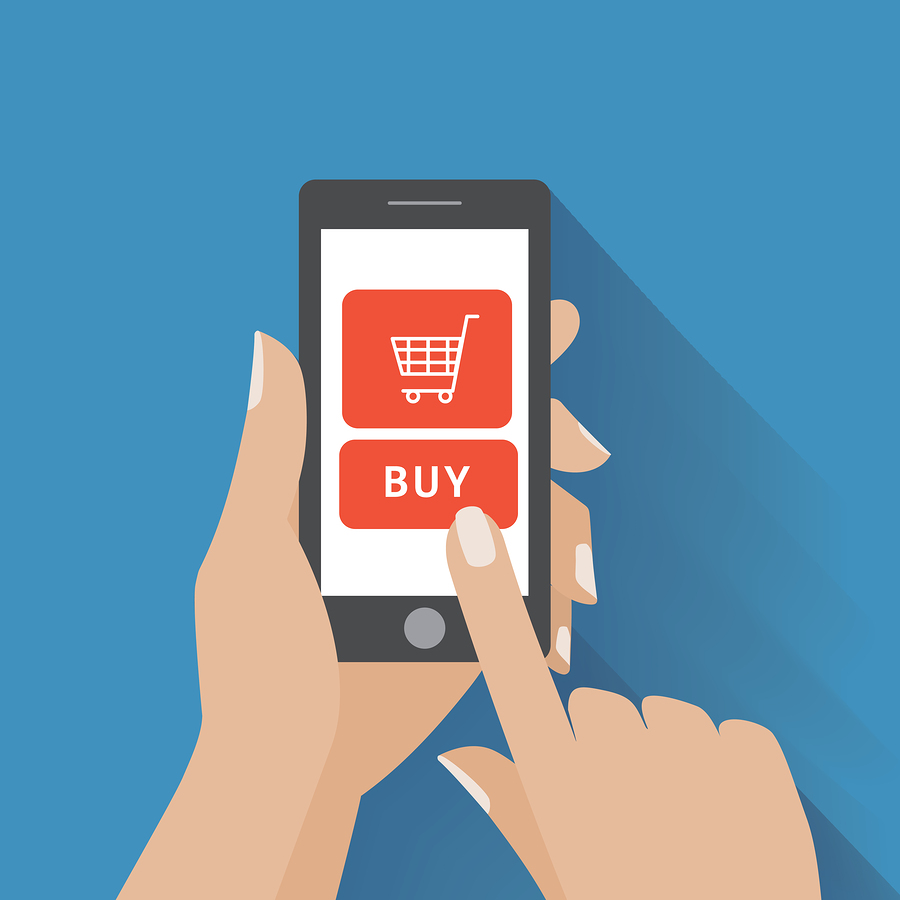Online Marketing: The Buying Process
When conducting online marketing, we often times focus solely on the act of purchasing. This strategy becomes problematic because buying is actually an entire process that a customer goes through psychologically before they decide to make a purchase. Business to Community has outlined 6 stages of the buying process and provides marketing strategies for each stage.
Stage 1: Problem Recognition
Problem recognition is the beginning stage of the customer buying process. A customer identifies with a problem when they perceive their current reality as different from where they desire to be. Whether or not this problem exists, it provides an opportunity for online marketing professionals to show how their products or services can solve the perceived problem.

Shane Jones from Business to Community (B2C) recommends that marketers “share facts and testimonials of what your product or service can provide. Ask questions to pull the potential customer into the buying process.” This type of information generates curiosity among customers to explore these solutions.
Stage 2: Information Search
Now that a customer has identified their problem, they are ready to look for ways to how to solve it. They begin to search for more information. This is an opportunity for marketers to show that they are an industry leader and their product/service is the solution. Create credibility and trust by “advertising partnerships and sponsors prominently on all web materials” B2C. Additionally, testimonials and success stories demonstrate your experience and customer satisfaction and make a lasting impression in a customer’s mind.
Stage 3: Evaluation of Alternatives
 The internet has made it easier for customers to do in-depth research and they do not want to make a purchase unless it is well thought out. They are going to look at your competition as well and compare their findings. B2C gives the example of how GEICO auto insurance uses this stage as an opportunity to keep their customers on their site by showing their competitors rates alongside theirs, even if the competition is cheaper, “This not only simplifies the process, it establishes a trusting customer relationship, especially during the evaluation of alternatives stage.”
The internet has made it easier for customers to do in-depth research and they do not want to make a purchase unless it is well thought out. They are going to look at your competition as well and compare their findings. B2C gives the example of how GEICO auto insurance uses this stage as an opportunity to keep their customers on their site by showing their competitors rates alongside theirs, even if the competition is cheaper, “This not only simplifies the process, it establishes a trusting customer relationship, especially during the evaluation of alternatives stage.”
Stage 4: Purchase Decision
“At this point, the customer has explored multiple options, they understand pricing and payment options and they are deciding whether to move forward with the purchase or not” B2C. In a perfect world customers would know what they wanted and would make the decision quick and easy. But even after careful research and a comparison of different products and brands the customer can still walk away. It is then that the marketer can “remind customers of why they wanted to make the purchase the first time” B2C and reaffirm their product/service’s ability to solve the problem that was identified in Stage 1 and.
We may have all heard and said the famous, “Let me think about it and I will get back to you.” Instead of looking at this as a defeat, again, marketers can create an opportunity to use follow up emails or phone calls to remind customers how their solutions can be of benefit to them.
Stage 5: Purchase
T he customer has decided to purchase! The conversion is complete. Or is it? Again, the customer can still have an out. This is probably one of the most critical points in a marketing strategy. B2C highly suggests over-viewing your buying process, “Is it complicated? Are there too many steps? Is the load time too slow? Can a purchase be completed just as simply on a mobile device as on a desktop computer?” These are all important questions that if the answers are not optimal, can make or break the deal.
he customer has decided to purchase! The conversion is complete. Or is it? Again, the customer can still have an out. This is probably one of the most critical points in a marketing strategy. B2C highly suggests over-viewing your buying process, “Is it complicated? Are there too many steps? Is the load time too slow? Can a purchase be completed just as simply on a mobile device as on a desktop computer?” These are all important questions that if the answers are not optimal, can make or break the deal.
Stage 6: Post Purchase Evaluation
Congratulations! The purchase has been made and everyone is happy. The process then concludes with a post purchase evaluation. The customer will then decide if they liked your product are not. If they are dissatisfied, they may ask for a return. Do not take this as a failure, instead take this thought:
“Your most unhappy customers are your greatest source of learning.”- Bill Gates
Use this as an opportunity to learn how to make your brand more effective. Asking for reviews and sending follow up emails or special promotions are ways to create a positive relationship by continuing to establish your brand’s trust and increasing the likelihood of a returning customer.
These six steps are geared to help marketers better understand the whole process behind a purchase. Understanding these steps and implementing a strategy can increase customer conversions and lead to lasting satisfied customers.
ITVibes specializes in Brand Management, helping clients develop a trusted name in their industry though eye catching web design, development, and quality content writing.
Contact us today to learn more about how our services can give you an better edge in your online marketing strategy.

